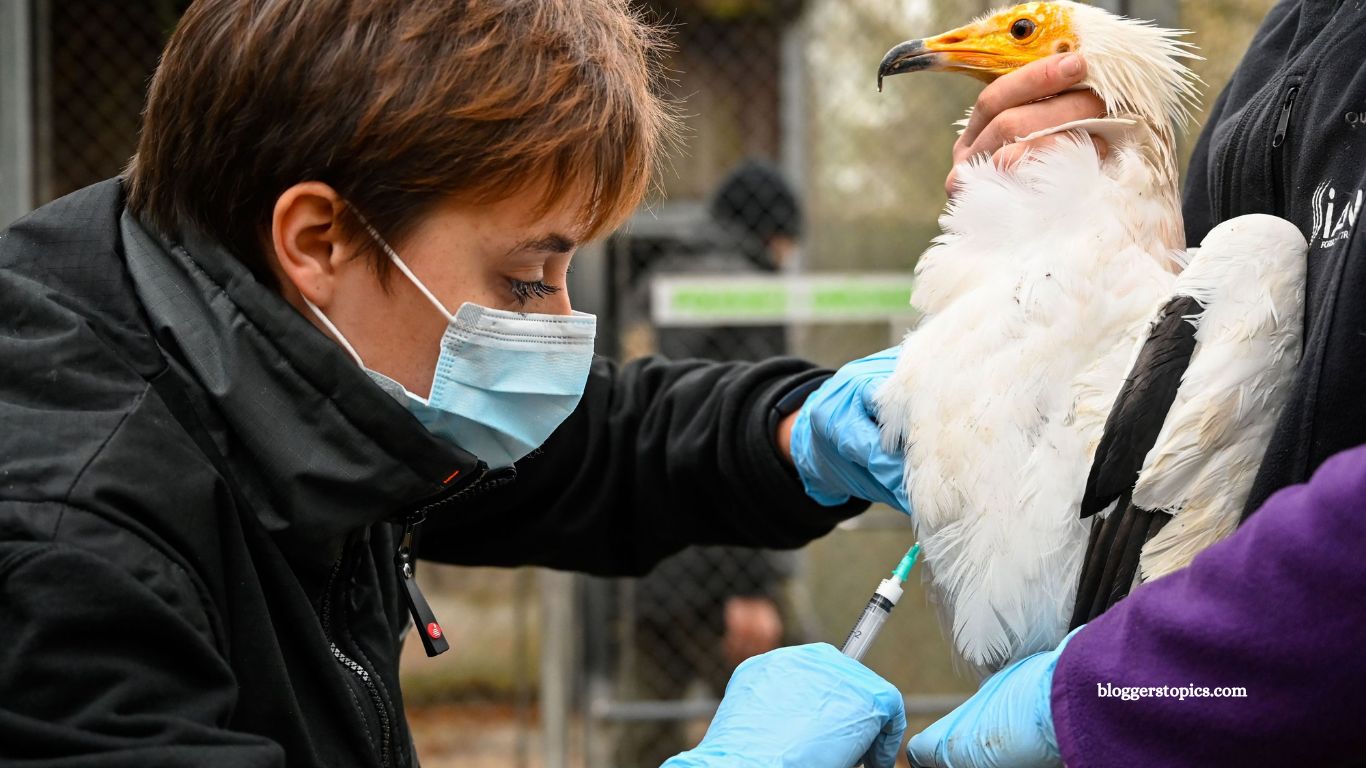The U.S. Department of Health and Human Services (HHS) has terminated a $766 million contract with Moderna to develop an mRNA-based vaccine targeting pandemic influenza strains, including bird flu, the biotechnology company announced on May 28. The decision marks a significant shift in federal pandemic preparedness strategy and raises concerns among public health experts about readiness for future influenza outbreaks.
The cancellation reportedly stems from safety concerns related to the mRNA vaccine platform, according to Reuters. This decision comes despite promising preliminary results from Moderna’s Phase 1/2 clinical trials, which suggested strong potential for the vaccine to serve as a critical countermeasure against emerging influenza threats.
“This program’s cancellation introduces uncertainty,” said Stéphane Bancel, Chief Executive Officer of Moderna. “These clinical data in pandemic influenza underscore the critical role mRNA technology has played as a countermeasure to emerging health threats.”
Read More: Measles Outbreak Expands to 34 States: Essential Tips to Stay Safe
The announcement comes as the H5N1 bird flu virus continues to spread across U.S. poultry farms and, more recently, into some dairy cow herds. While the overall risk to human health remains low—with no confirmed cases of human-to-human transmission—experts are closely monitoring the situation.
To date, bird flu has affected more than 173 million birds across 51 states. Human cases remain rare, with only 70 reported in the U.S., most following direct exposure to infected livestock. Just one fatality has been recorded, and five of the cases occurred without such contact, prompting further investigation.
A recent Morbidity and Mortality Weekly Report (MMWR) highlighted three asymptomatic human cases of H5N1 among veterinarians who had been in contact with various animal species, including dairy cattle. These findings have raised questions about whether the virus may already be transmitting to humans without causing symptoms.
Public health officials remain watchful as the virus continues to evolve. Like other respiratory viruses, H5N1 is prone to mutation, and recent reports of infections in domestic cats and wild animals underscore its capacity to spread across species. Researchers warn that the virus may be only a few genetic mutations away from acquiring the ability to transmit more efficiently among humans.
In an interview with Healthline, Dr. William Schaffner, professor of preventive medicine and infectious diseases at Vanderbilt University Medical Center, emphasized the importance of continued vigilance.
“While the current human health risk remains low, the situation is fluid,” Schaffner noted. “Public health agencies must remain proactive, not just reactive, when it comes to pandemic preparedness.”
As the landscape of infectious disease threats continues to shift, experts argue that investment in broad-spectrum, next-generation vaccines—like those based on mRNA technology—may still prove essential to minimizing future risks.
Is Bird Flu ‘Silently Spreading’ to Humans?
According to Dr. William Schaffner, professor of preventive medicine and infectious diseases at Vanderbilt University Medical Center, there is a possibility of undetected, or “silent,” spread of the bird flu virus to humans—particularly those in close contact with animals.
“There may well be some silent transmission occurring,” Schaffner said. “Public health investigators interviewed the affected veterinarians to identify any known contact with infected animals, but given the nature of their work, these individuals likely interacted with numerous animals, not all of which were tested. It’s possible they acquired the infection from an unrecognized animal source.”
He emphasized that these cases do not suggest person-to-person transmission. Instead, the infections likely stemmed from exposure to infected animals whose illness was either undetected or undocumented.
“I believe the more probable route of infection is from an undefined animal source,” he said. “Whether it’s poultry, cattle, or other livestock, veterinarians and farm workers could be contracting the virus from animals that haven’t been identified as infected.”
Is the Risk to Humans Still Low?
“Yes, indeed — the risk to humans remains very, very low,” said Dr. William Schaffner, professor of preventive medicine and infectious diseases at Vanderbilt University Medical Center. “There is still no evidence of easy person-to-person transmission. In fact, to date, none of the documented U.S. cases have resulted in secondary infections among close contacts.”
According to Dr. Schaffner, this indicates that the virus has not yet acquired the genetic mutations necessary for sustained human-to-human spread.
“If it ever gains that capacity,” he warned, “we could find ourselves at the edge of another pandemic. Historically, pandemic influenza viruses have emerged every 10 to 20 years, but this bird flu strain has not crossed that threshold—yet.”
He added that while the virus has been circulating in wild birds and domestic poultry for two decades, recent spillover into mammals is concerning.
“We’re seeing infections in dairy cattle, as well as in mink, domestic cats, and even some zoo animals. That’s why the public health and infectious disease communities are on alert.”
Dr. Schaffner emphasized that surveillance efforts are ongoing: “We’re actively sampling influenza-like illnesses and conducting molecular fingerprinting of circulating viruses. This is our early warning system—our radar—to detect any signs that the virus is evolving in a way that could make it more dangerous to people.”
How Likely Is Human-to-Human Transmission?
According to Dr. William Schaffner, professor of preventive medicine and infectious diseases at Vanderbilt University Medical Center, while sustained human-to-human transmission of bird flu hasn’t occurred yet, the potential remains a serious concern.
“I’m afraid I can’t offer complete reassurance,” Schaffner said. “There are two primary ways this virus could acquire the ability to spread easily between humans.”
The first involves the sheer scale of viral replication in animals.
“These viruses are multiplying constantly—in wild birds, poultry, dairy cattle, and potentially other mammals—by the millions and trillions,” he explained. “With that much replication happening, a mutation allowing human transmission could emerge purely by chance. While that route is less common, it’s not impossible.”
The second—and more likely—pathway is through a process called reassortment.
“Some animals, like pigs, are biologically susceptible to both human influenza and avian influenza viruses,” Schaffner said. “If a pig is co-infected with both types of virus, the two can replicate simultaneously in the same host. During that process, they can trade genetic material.”
This genetic exchange could potentially allow the bird flu virus to acquire the capability to infect and transmit efficiently among humans.
“That’s how the 2009 H1N1 swine flu pandemic began,” he noted. “A bird flu virus mixed with a human flu virus inside a pig and picked up the traits it needed to spread among people.”
As for when—or if—this could happen with the current strain of bird flu, Schaffner emphasized the uncertainty.
“We simply can’t predict it,” he said. “It could happen next week, next decade, or never. But that’s why surveillance is so critical.”
Fortunately, modern tools offer scientists far greater insight than in previous decades. “Today, we can do molecular fingerprinting of these viruses around the world in real time,” he said. “That gives us a global radar system to detect early signs of viral evolution. It’s our best defense against being caught off guard.”
Should We Be Concerned About Backyard Birds?
Dr. William Schaffner, professor of preventive medicine and infectious diseases at Vanderbilt University Medical Center, says there is currently no strong evidence that backyard birds are spreading bird flu to household pets—but the risk, while low, isn’t zero.
“We know that domestic cats can become seriously ill from bird flu,” Schaffner explained. “That’s been clearly documented, particularly in barn cats on dairy farms where they consumed contaminated raw milk and became infected.”
As for cats catching the virus from backyard birds, Schaffner says that scenario remains speculative. “We’re not seeing widespread infections in cats from backyard bird feeders or birdbaths,” he said. “But could it happen? Yes, it’s within the realm of possibility.”
For those who are concerned, Schaffner recommends taking simple, precautionary steps.
“If you regularly handle a bird feeder or clean a birdbath, consider wearing disposable gloves,” he advised. “Afterward, discard the gloves and wash your hands thoroughly.”
Households with cats may also want to take extra care. “If you’re particularly worried about your pet’s exposure, temporarily taking down your bird feeder is a low-effort, preventative measure,” Schaffner added.
Can You Catch Bird Flu From Your Cat?
According to Dr. William Schaffner, the risk of contracting bird flu from a household pet—such as a cat—is extremely low.
“If your pet cat were to get bird flu, it’s pretty unlikely you would catch it from them,” said Schaffner, a professor of preventive medicine and infectious diseases at Vanderbilt University Medical Center.
That said, he advises taking sensible precautions when caring for any sick animal.
“As with any pet suffering from an infectious illness, it’s important to be cautious,” he noted. “Listen to your veterinarian’s guidance, wear gloves while handling the animal, and practice good hygiene afterward.”
When Can We Expect a Bird Flu Vaccine?
Editor’s Note: The future of a bird flu vaccine is uncertain following the U.S. Department of Health and Human Services’ decision to terminate a $766 million agreement with Moderna to develop an mRNA-based vaccine targeting the H5N1 strain. The company has stated it will explore alternative pathways for the program’s late-stage development and manufacturing.
Despite this pause, Dr. Schaffner emphasized that foundational work on a bird flu vaccine is already well underway.
“There’s already a blueprint—a template—for producing a bird flu vaccine,” he said. “It was developed several years ago, and the U.S. has a small amount stockpiled as a precautionary measure.”
As the virus continues to evolve, that early vaccine is being updated to match more recent variants. “We’re refreshing it to better reflect today’s strain,” Schaffner explained. “At the very least, we’ll have an updated version in the national stockpile for use in high-risk populations, should the need arise.”
Currently, the vaccine would be reserved for those most exposed to the virus—such as poultry workers and dairy farm employees. Broader distribution would only occur if there were signs of sustained human transmission.
While a bird flu vaccine won’t prevent every infection, its greatest value lies in reducing the severity of illness.
“As the CDC often says, flu vaccines help ‘turn wild into mild,’” Schaffner said. “They won’t stop every case, but they can dramatically lower the risk of severe disease, hospitalization, and death.”
Could There Be a Bird Flu Pandemic?
Dr. William Schaffner, professor of preventive medicine and infectious diseases at Vanderbilt University Medical Center, says the possibility of a bird flu pandemic cannot be ruled out—but predicting if, when, or how it might happen is impossible.
“We can’t predict the future,” Schaffner said. “This strain of bird flu, in various forms, has been circulating for more than 20 years—and it hasn’t triggered a pandemic yet. But we do know this: there will be another influenza pandemic at some point. Whether it comes from bird flu, swine flu, or another strain entirely, we just can’t say.”
What matters now, he emphasized, is preparedness.
“Public health preparedness requires sustained resources, attention, and commitment,” he said. “We can’t afford to let our guard down. Too often, when the immediate threat fades from headlines, the investment in readiness starts to wane. That’s a dangerous cycle.”
Dr. Schaffner also highlighted a more immediate concern: seasonal influenza. “Right now, we’re facing a severe seasonal flu outbreak,” he noted. “And unfortunately, vaccine uptake has been significantly lower than we would like.”
His advice to the public is simple but urgent: Don’t wait for the next pandemic to take flu seriously.
“My message is this: make a resolution this fall to get your flu vaccine—and bring your whole family,” Schaffner urged. “That’s how we blunt the impact of the next outbreak. Because there will be another flu season next winter. Whether it’s mild, moderate, or severe, we know it’s coming.”
Frequently Asked Questions
What does ‘HHS Cuts Funding’ mean?
It refers to the U.S. Department of Health and Human Services (HHS) canceling a significant contract—worth $766 million—with Moderna. This contract was aimed at developing mRNA-based vaccines for pandemic-related influenza strains, including bird flu (H5N1).
Why is Moderna mentioned specifically in the title?
Moderna is the biotech company that was awarded the contract to develop these vaccines. Its involvement highlights the importance of mRNA technology in future pandemic preparedness—and the impact of this funding cut.
What’s the significance of including both ‘Bird Flu’ and ‘Influenza Vaccines’ in the title?
The vaccines in development were designed to protect against various flu strains with pandemic potential—not just seasonal influenza, but also avian influenza (bird flu), which has recently spread to mammals and even humans. Mentioning both clarifies the broad scope of the vaccine program.
Why add ‘What to Know’ at the end?
This phrase signals that the article is designed to break down complex news into accessible, need-to-know information for the general public. It positions the story as informative, not alarmist.
Is this a political decision or a public health one?
While not explicitly political, the cancellation occurred under a prior administration and raises questions about long-term pandemic preparedness priorities. The article explores both the scientific and policy dimensions.
Does the title suggest a health risk to the public?
Not directly. The title frames the story around a policy decision rather than an immediate health threat. However, the article goes on to explain the broader context of bird flu’s potential risk to humans and the role of vaccines in prevention.
Conclusion
The cancellation of federal funding for Moderna’s bird flu and pandemic influenza vaccine program has raised important questions about the U.S. government’s long-term commitment to pandemic preparedness. While the risk of bird flu spreading widely among humans remains low for now, experts caution that the virus is evolving—and may only be a few mutations away from acquiring the ability to transmit efficiently from person to person.
Public health officials, including Dr. William Schaffner, emphasize that proactive surveillance, sustained funding, and vaccine development are essential tools in preventing the next pandemic. Although the Moderna contract was terminated, efforts to update and stockpile bird flu vaccines continue behind the scenes, and scientific capacity for detecting and responding to emerging threats is stronger than ever.







